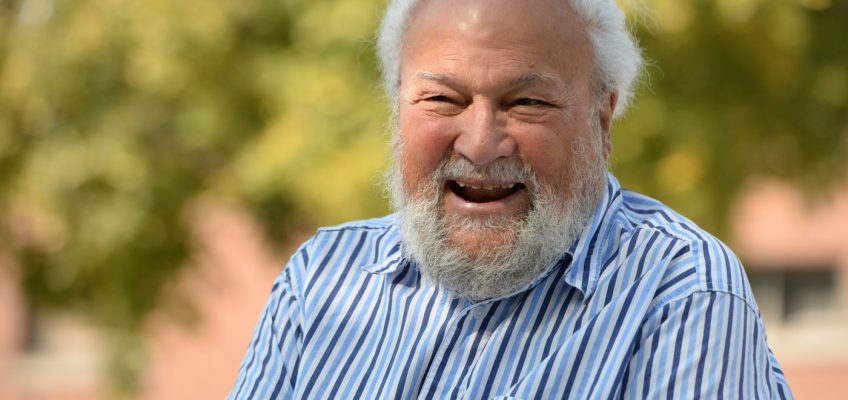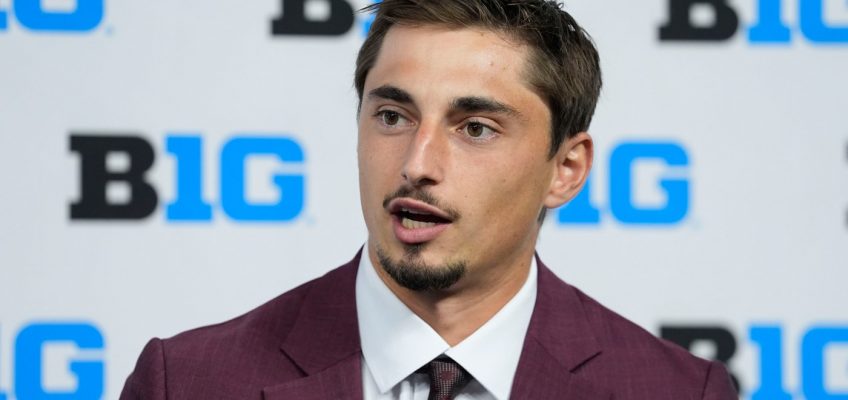George Latimer, the longest serving mayor of St. Paul, was scheduled to be laid to rest Monday following a Catholic mass at the Church of the Assumption in downtown St. Paul.
Latimer, a labor lawyer who served as the capital city’s mayor from 1976 to 1990, was remembered as a gregarious, kind-hearted leader whose accomplishments in the legal realm never overshadowed his quip-laden, day-to-day interactions with everyday residents.
That said, “he was not unimpressed with himself,” joked former St. Paul Mayor Chris Coleman, now the chief executive officer of Twin Cities Habitat for Humanity, who delivered Latimer’s eulogy.
Coleman remembered Latimer’s penchant for family road-trips with multiple grandchildren in tow, and family dinners at the Latimer house marked by polite debate and heavy servings of red meat.
“Every opinion was respected,” Coleman said. “He assumed you had a brain and he wanted you to use it … a man who loved his children’s spouses so deeply he felt they were his own children.”
“When I had a tough decision to make in City Hall, George was the first call that I’d make,” Coleman said. “When he called me, he’d say ‘Tall mayor, this is the short mayor.’”
Period of change
Latimer served in elected office during a period of deep demographic change in St. Paul and across the nation. Middle class white families began leaving urban areas for the suburbs in the 1970s, taking jobs and other opportunities with them. After the Vietnam era, Hmong refugees relocated to St. Paul in three large waves.
Latimer took pains to protect the Landmark Center by Rice Park and other aged buildings in danger of demolition during a period of declining population, Coleman said, and his dedication to downtown urban renewal led to construction of some of the city’s most recognizable office buildings.
Not all of his decisions were well received. When residents along Snelling Avenue objected to the proposed Hubert Humphrey Job Corps Center — a residential work training program for troubled teens — Latimer waved away threats they’d vote against him, Coleman said.
”People were just vicious,” recalled Joe Nathan, a youth training advocate who managed two of Latimer’s political campaigns, in a brief interview.
Latimer, known during his elected term for enjoying social drinking in downtown bars, once fell asleep in his car outside City Hall, prompting a concerned St. Paul Police officer — Melvin Carter II, father of the current mayor — to drive him home.
When the media got wind of the story, Coleman said, Latimer quickly confessed to having taken a public nap, and heaped praise on the officer. He smartly avoided the type of scandal that could have unfolded “over months,” Coleman said.
Coleman noted that Latimer had delivered the eulogy at his own father’s funeral mass — former Minnesota Senate majority leader Nick Coleman, Sr. — and had requested that Coleman do the same for him.
Also in attendance in the crowded church hall were U.S. Sen. Amy Klobuchar, St. Paul Mayor Melvin Carter and former Mayor Jim Scheibel.
Among Latimer’s titles over the decades, he served as a regent at the University of Minnesota, dean of Hamline University School of Law, an Under Secretary for Housing and Urban Development during the Clinton administration, chair of the National Equity Fund, president of the National League of Cities and a member of the St. Paul Public School board.
He was also named a distinguished professor at Macalester College, a labor arbitrator and a member of any number of volunteer boards and committees.
Grew up in working-class Schenectady, N.Y.
The youngest of three boys, Latimer grew up in working-class Schenectady, N.Y. His family ran a neighborhood grocery store and deli named “Latimer’s,” which would would later draw fond memories of his mother creating large batches of potato salad in the store’s back room, according to his paid obituary.
He go on to graduate from Columbia Law School and and find employment with a Minnesota law firm before running for St. Paul School Board.
Latimer, who entered hospice in 2022 only to “graduate” after several months, died on Aug. 18 at the Episcopal Homes senior campus on University Avenue in St. Paul, where he had taken up residence in 2014, the same year the Green Line light rail launched outside its doors. He was 89.
Latimer was preceded in death by his brothers, William and Philip, and his wife of 47 years, Nancy Moore Latimer. He is survived by five children and 11 grandchildren. His paid obituary said he is also survived by his longtime friend, Dusty Mairs, who for years would visit with him daily and bring him multiple printed newspapers, one of his favored pastimes.
Related Articles
Excessive heat warning continues on Monday; here are options to stay cool
Demolition of Kellogg Boulevard/Third Street bridge will begin in earnest on Monday
Chad Kulas: The potential of St. Paul’s Midway soars
Peggy Lynch, called the ‘conscience’ of St. Paul’s parks, dies at 90
Lake Nokomis beaches remain closed after sanitary sewer spill; here are other swimming options




